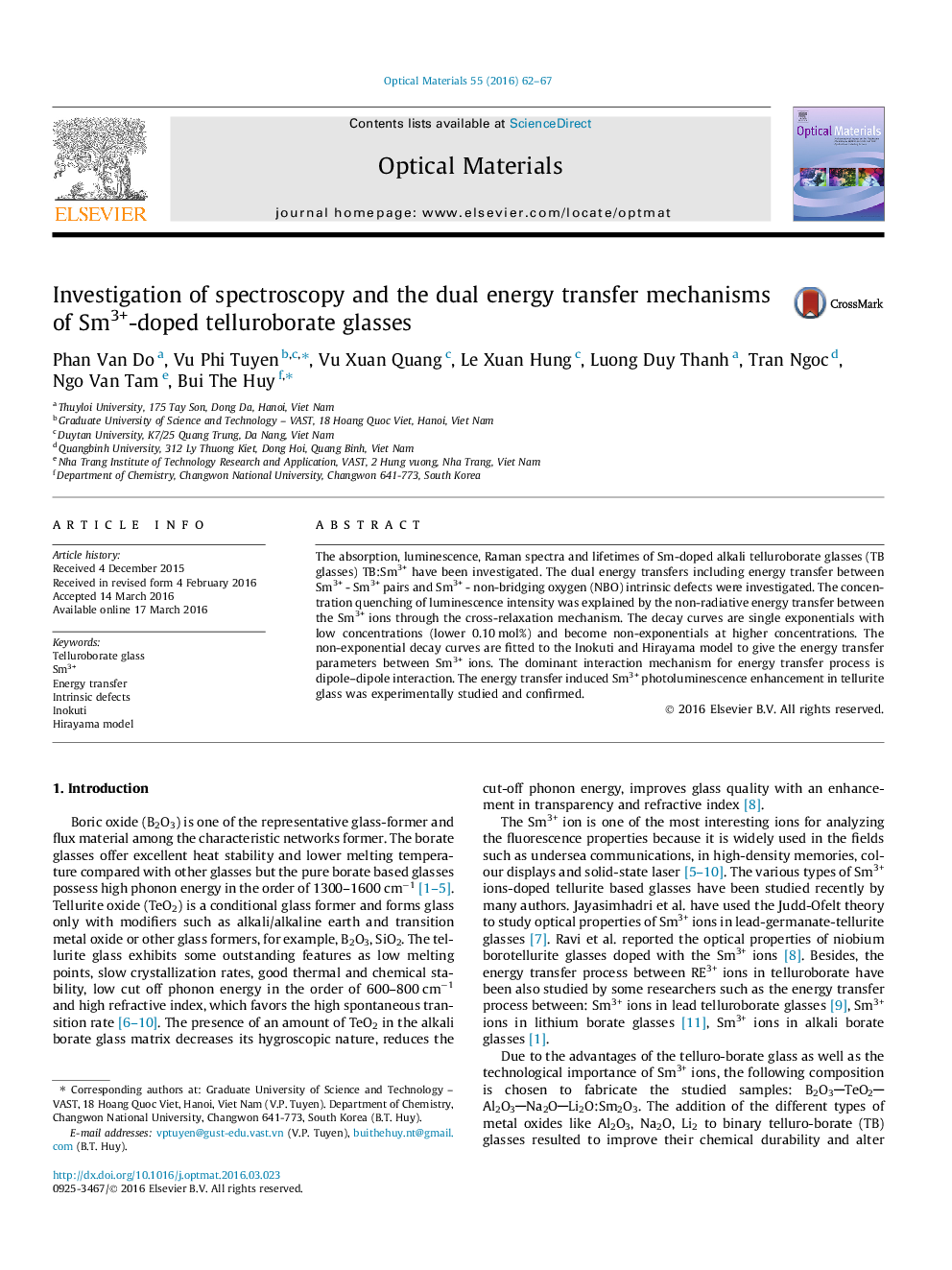| کد مقاله | کد نشریه | سال انتشار | مقاله انگلیسی | نسخه تمام متن |
|---|---|---|---|---|
| 1493332 | 1510779 | 2016 | 6 صفحه PDF | دانلود رایگان |

• Quenching effect of Sm3+ relates to energy transfer by dipole-dipole interaction.
• Inokuti-Hirayama model is suitable for estimating energy transfer parameter.
• Sm3+ concentration influences on energy transfer probability and lifetime value.
• The luminescence intensity increases with increasing of temperature.
• The energy transfer between NBO-intrinsic defects and the Sm3+ ions.
The absorption, luminescence, Raman spectra and lifetimes of Sm-doped alkali telluroborate glasses (TB glasses) TB:Sm3+ have been investigated. The dual energy transfers including energy transfer between Sm3+ - Sm3+ pairs and Sm3+ - non-bridging oxygen (NBO) intrinsic defects were investigated. The concentration quenching of luminescence intensity was explained by the non-radiative energy transfer between the Sm3+ ions through the cross-relaxation mechanism. The decay curves are single exponentials with low concentrations (lower 0.10 mol%) and become non-exponentials at higher concentrations. The non-exponential decay curves are fitted to the Inokuti and Hirayama model to give the energy transfer parameters between Sm3+ ions. The dominant interaction mechanism for energy transfer process is dipole–dipole interaction. The energy transfer induced Sm3+ photoluminescence enhancement in tellurite glass was experimentally studied and confirmed.
Journal: Optical Materials - Volume 55, May 2016, Pages 62–67